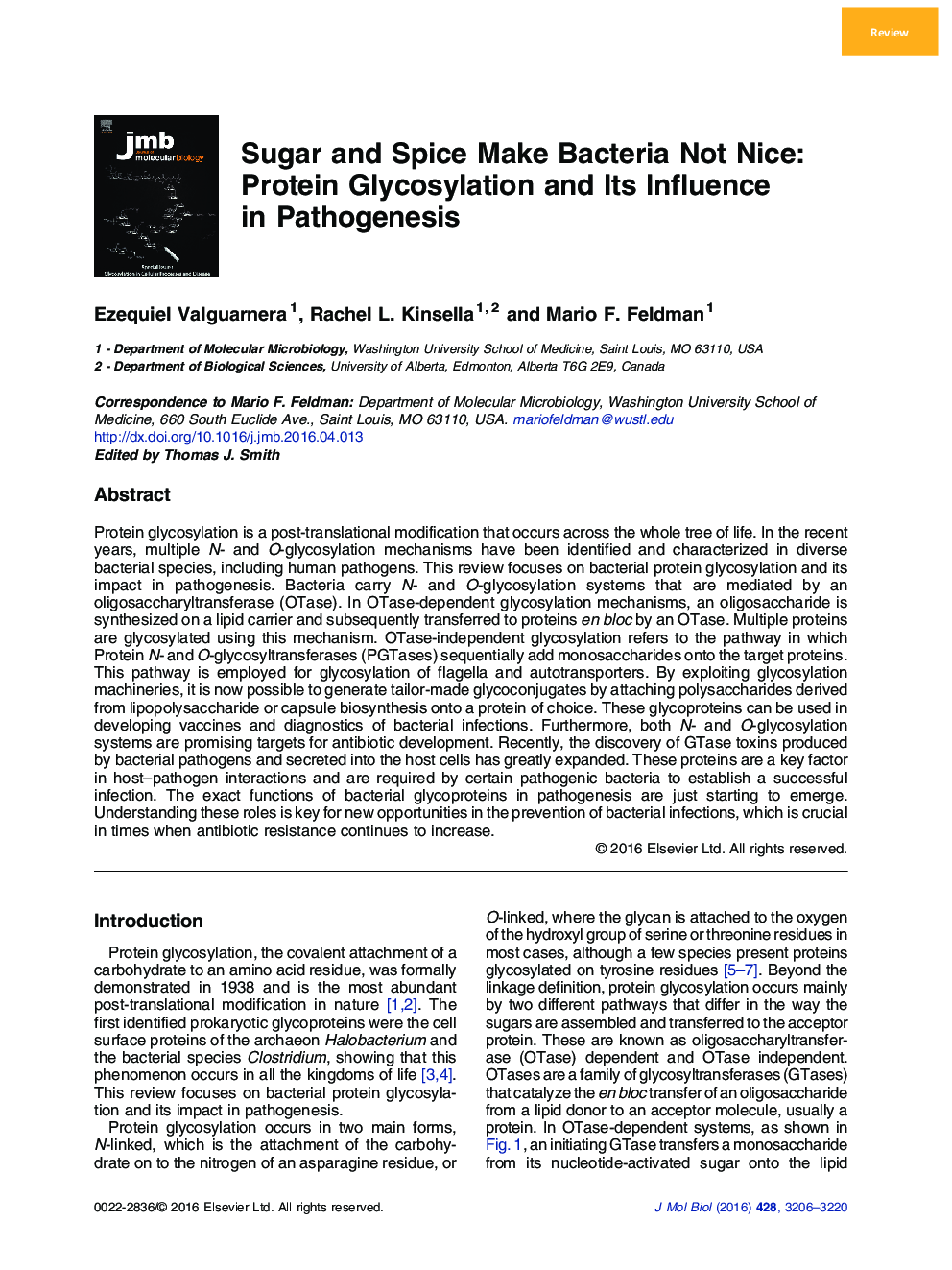| کد مقاله | کد نشریه | سال انتشار | مقاله انگلیسی | نسخه تمام متن |
|---|---|---|---|---|
| 2184248 | 1095815 | 2016 | 15 صفحه PDF | دانلود رایگان |
• Protein glycosylation mechanisms in bacteria are comprehensively described.
• Impact of bacterial protein glycosylation on pathogenesis is widely addressed.
• The link between bacterial GTases in host–pathogen coevolution is discussed.
Protein glycosylation is a post-translational modification that occurs across the whole tree of life. In the recent years, multiple N- and O-glycosylation mechanisms have been identified and characterized in diverse bacterial species, including human pathogens. This review focuses on bacterial protein glycosylation and its impact in pathogenesis. Bacteria carry N- and O-glycosylation systems that are mediated by an oligosaccharyltransferase (OTase). In OTase-dependent glycosylation mechanisms, an oligosaccharide is synthesized on a lipid carrier and subsequently transferred to proteins en bloc by an OTase. Multiple proteins are glycosylated using this mechanism. OTase-independent glycosylation refers to the pathway in which Protein N- and O-glycosyltransferases (PGTases) sequentially add monosaccharides onto the target proteins. This pathway is employed for glycosylation of flagella and autotransporters. By exploiting glycosylation machineries, it is now possible to generate tailor-made glycoconjugates by attaching polysaccharides derived from lipopolysaccharide or capsule biosynthesis onto a protein of choice. These glycoproteins can be used in developing vaccines and diagnostics of bacterial infections. Furthermore, both N- and O-glycosylation systems are promising targets for antibiotic development. Recently, the discovery of GTase toxins produced by bacterial pathogens and secreted into the host cells has greatly expanded. These proteins are a key factor in host–pathogen interactions and are required by certain pathogenic bacteria to establish a successful infection. The exact functions of bacterial glycoproteins in pathogenesis are just starting to emerge. Understanding these roles is key for new opportunities in the prevention of bacterial infections, which is crucial in times when antibiotic resistance continues to increase.
Graphical AbstractFigure optionsDownload high-quality image (329 K)Download as PowerPoint slide
Journal: Journal of Molecular Biology - Volume 428, Issue 16, 14 August 2016, Pages 3206–3220
